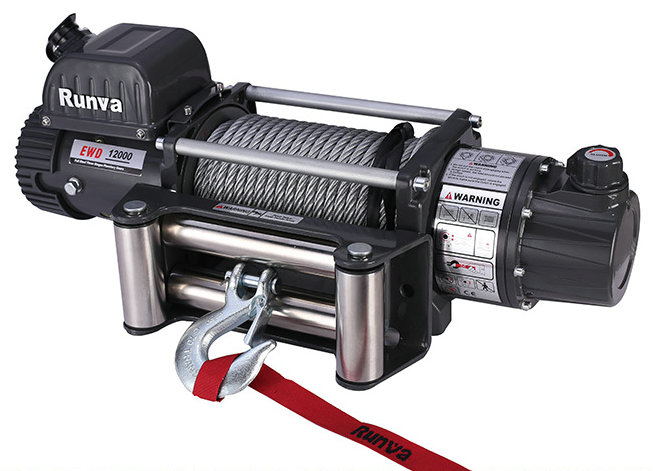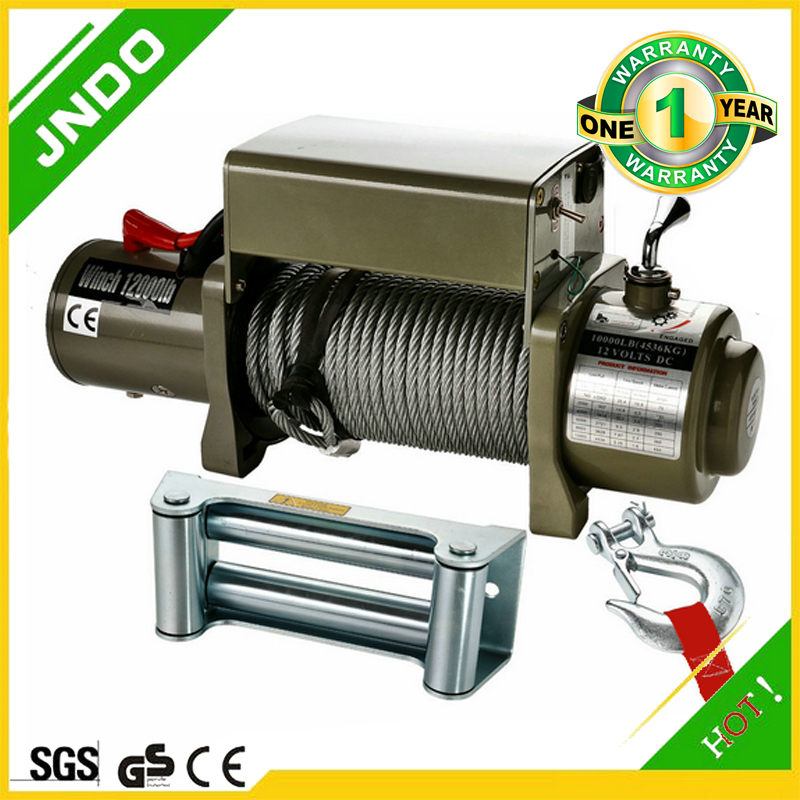Electric winch:the perfect pulling tool you need

12-volt winch comparison review
18/08/2017About installing electric winch
03/04/2019Electric winch:the perfect pulling tool you need

Many people dream of becoming the next Superman, capable of lifting, pulling, and moving incredibly large and heavy objects without breaking a sweat. However, the fact is that ordinary people need help and tools to get the job done.
Imagine you’ve encountered an abandoned car on a dirt road whose tires are half buried into the soil. You’ll need some way to lift and drag the car out of this situation. Your car would be the recovery vehicle, the one equipped with a hauling or lifting device that includes a rope, cable, or chain wrapped around a horizontal, rotating drum and powered by either a crank or motor. This hauling device will create tension along the rope or chain to pull that abandoned car out of its sticky situation. The hauling device on this recovery vehicle is called a winch.
Practically speaking, the winch offers a degree of versatility that supports tow trucks and large vehicles. The major components of a winch include a cable wire, drum, motor, and gear train. A winch’s cable wire ranges in length between forty and one hundred feet and is usually made of steel or some type of synthetic wire. The winch drum is circular in shape and allows the wire to wrap neatly around it, thanks to a built-in spool that rotates and winds the cable wire either in or out.
A winch’s motor drives the power behind the turning of the drum so that it can wrap the wire around itself. Although not all winches have built-in motors (some have cranks), they are more commonly included with vehicle winches to help speed up the towing or recovery process. The gear train represents the torque that converts power from the motor to actual pulling power so that the winch can pull in heavy materials.
The vehicle being recovered by the winch typically has a recovery point, an area onto which the winch can be attached or hooked to pull the stuck vehicle out. Recovery points have different ratings depending on the type of car and the amount of weight they can withstand. Recovery points are either built into the design of a car’s anatomy or attached as an after-market solution.
The application of a winch goes beyond simple towing. The capstan, for example, is similar in design to a winch with the exception of not storing the rope on its drum. Capstans are used by sailing ships and yachts to apply force to rope. During line trimming on sailboats, a crewmember will turn the winch’s handle with one hand, while pulling on the loose tail end of the rope with the other in order to create tension during turns.
Winches are also invaluable to the backstage mechanics of moving scenery associated with theatrical plays. If we revisit our Superman analogy and imagine someone is playing the character on stage, the actor will not be able to move the heavy background objects needed to convince the audience that he is Superman in the first place. You can see the irony, but that doesn’t negate the importance of the work performed by the winch.
Finally, winches perform well in recreational watersports too, including wakeboarding and wakeskating in which the winch is used to quickly pull riders across a body of water.
Why The Winch Matters
If you own a fairly heavy-duty truck and provide a lot of roadside assistance and recovery, then weight capacity is one of the key aspects to consider when investing in a winch. Not every vehicle you encounter will be the same weight, so you need to ensure that the winch you choose is powerful enough to accommodate a range of load capacities to safely pull stranded or stuck vehicles out of difficult situations.
For that reason, knowing what kind of ropes and cables the winch comes with is also important, since it’s the cable (or winch line) that will be doing a majority of the work. Additionally, finding an electric winch with a powerful enough motor is an absolute given. If your winch’s motor isn’t powerful enough to safely wind and unwind its cables around the drum, then that stranded car won’t be going anywhere.
Having a winch made from water and rust-resistant steel will also come in handy when performing recovery jobs in bad weather conditions.
A Brief Winch History
The use of the winch dates as far back as the fourth century BCE when they were used to tighten cables for supporting pontoon bridges. The yacht named Reliance was the first racing boat to be fitted with a modern-style winch in 1903.
In 1948, Arthur and Sadie Warn founded Warn Industries, which was based on the idea of converting World War Two jeeps into useful road vehicles. Thanks to this collaboration, the pair introduced their first recreational winch in 1959. This winch became one of the most well-respected brands for off road racers and ranchers among others. Decades of engineeiring would lead Warn Industries to create a winch market for ATVs and UTVs in the 1990s.
In 2008, Warn Industries released their XL product line for use on trailers and in the recovery market with hydraulic winches delivering twenty to thirty thousand pounds of torque and pulling power. Additionally, the fan cooled electric winch was also released for recreational users.
